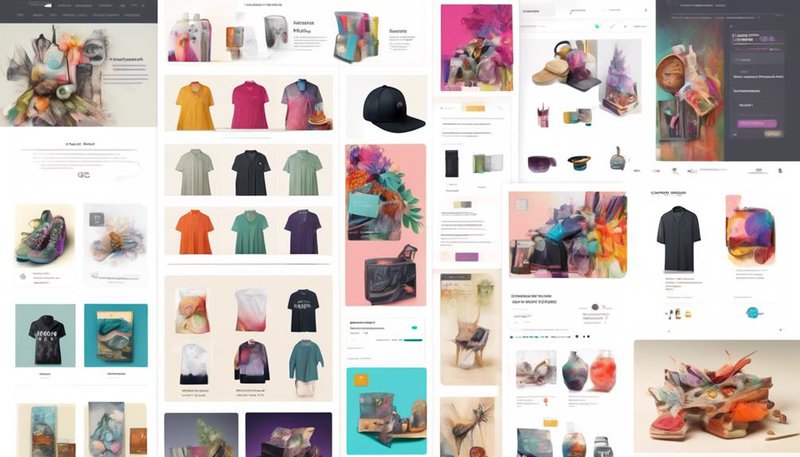How to Choose the Perfect WooCommerce Template for a Website

Choosing the perfect WooCommerce template for your website involves considering factors such as your website's goals and your brand's visual identity. This is important because the template you choose will directly impact your online presence and the experience your customers have on your website.
To begin with, you should have a clear understanding of your website's goals. Are you looking to sell products, provide information, or both? This will help you determine the type of template that will best suit your needs. For example, if you are primarily focused on selling products, you may want to choose a template that has a strong emphasis on showcasing your products and includes features such as product galleries and a seamless checkout process.
Next, you should consider your brand's visual identity. It's important that your website's design aligns with your brand's image and values. This includes factors such as color scheme, typography, and overall aesthetic. Look for a template that allows you to easily customize these elements to match your brand's identity.
Another important factor to consider is the template's compatibility with WooCommerce. WooCommerce is a popular e-commerce platform, and you want to ensure that the template you choose is fully compatible with its features and functionality. This will make it easier for you to set up your online store and manage your products.
In conclusion, choosing the perfect WooCommerce template involves considering your website's goals, your brand's visual identity, and the template's compatibility with WooCommerce. By taking these factors into account, you can enhance your online presence and improve your customers' experience.
Determine Your Website's Goals
To effectively choose a WooCommerce template, it's crucial to determine the goals of your website. Understanding your website's target audience and conducting a competitor analysis will help you make informed decisions about the template that best suits your needs.
Identifying your website's target audience is the first step in determining your goals. Who are you trying to reach with your website? What're their needs and preferences? By understanding your target audience, you can tailor your website's design and functionality to meet their expectations.
Next, conducting a competitor analysis is essential. Take a look at other websites in your industry that are targeting the same audience. What templates are they using? How are they presenting their products or services? Analyzing your competitors' websites will give you insights into what works and what doesn't, helping you make strategic decisions for your own website.
Consider Your Brand's Visual Identity
Consider the visual identity of your brand when choosing a WooCommerce template. Your brand's visual identity plays a crucial role in creating a cohesive and memorable online presence. When selecting a template, it's important to take into account your branding elements and color scheme to ensure consistency across your website.
Branding elements such as your logo, fonts, and graphics should be considered when choosing a WooCommerce template. Look for a template that allows you to easily incorporate these elements and maintain a consistent brand image. This will help to reinforce your brand's identity and make it easily recognizable to your customers.
In addition to branding elements, your color scheme is another important aspect to consider. Your website's color palette should align with your brand's visual identity and evoke the desired emotions or feelings. Look for a template that offers customization options for colors, allowing you to match your brand's color scheme seamlessly.
Evaluate Template Design and Layout Options
When evaluating template design and layout options for your WooCommerce store, there are a few important considerations to keep in mind.
Firstly, consider the overall design of the template and whether it aligns with your brand's visual identity.
Additionally, think about the layout selection and how it can enhance the user experience and make navigation easy for your customers.
Design Considerations
Evaluate the template design and layout options to ensure a visually appealing and user-friendly online store. The design of your WooCommerce template plays a crucial role in attracting and retaining customers. Keeping up with design trends is important to stay relevant and create a modern and visually appealing store. Additionally, prioritizing user experience is essential to make navigation seamless and intuitive for your visitors. Consider the following design considerations when evaluating template options:
| Design Consideration | Description |
|---|---|
| Responsive Design | Ensure the template is responsive and adapts to different screen sizes for a consistent experience across devices. |
| Clear and Simple | Opt for a clean and uncluttered design that showcases your products effectively and makes it easy for customers to find what they are looking for. |
| Visual Hierarchy | Use visual cues like size, color, and contrast to guide users' attention and highlight important information or actions. |
| Intuitive Navigation | The template should have clear and easily accessible navigation menus and search functionality to help users find products quickly. |
| Fast Loading Speed | Choose a template that is optimized for speed, as slow loading times can lead to a poor user experience and higher bounce rates. |
Layout Selection
To ensure an effective online store, carefully assess the design and layout options of WooCommerce templates. The layout of your website plays a crucial role in providing a seamless and enjoyable user experience.
When evaluating different templates, consider the layout customization options available. Look for templates that allow you to easily rearrange elements and customize the overall look and feel of your website. This will help you create a unique and personalized online store that reflects your brand identity.
Additionally, pay attention to the user experience (UX) aspects of the layout. Ensure that the template you choose has a clear and intuitive navigation system, with well-organized product categories and a user-friendly checkout process.
A well-designed layout won't only enhance the visual appeal of your website but also improve the overall shopping experience for your customers.
Assess Template Customization and Flexibility
When choosing a WooCommerce template, it's important to assess the customization options and flexibility features available to you.
Look for templates that allow you to easily customize the design, layout, and colors to match your brand identity.
Additionally, consider templates that offer flexibility in terms of adding or removing features, integrating with third-party plugins, and adjusting the overall functionality of your online store.
Customization Options
You can easily customize and adapt your chosen WooCommerce template to meet your specific needs and preferences. Here are four customization options to consider:
- Customization benefits: WooCommerce templates offer a wide range of customization options, allowing you to personalize your website's appearance, layout, and functionality. You can easily change colors, fonts, and images to match your brand identity. Additionally, you can add custom features and functionalities using plugins and extensions.
- Customization limitations: While WooCommerce templates offer flexibility, there may be limitations in terms of design and layout. Some templates may not allow extensive customization or may require coding knowledge for advanced changes. It's important to evaluate the level of customization required for your website and choose a template that meets your needs.
- Template builders: Many WooCommerce templates come with built-in page builders, which provide a drag-and-drop interface for easy customization. These builders allow you to create unique layouts without any coding knowledge.
- Plugin compatibility: Make sure the WooCommerce template you choose is compatible with popular plugins that you may need for your website. This will ensure seamless integration and allow you to enhance your website's functionality.
Flexibility Features
As you evaluate the customization options of your chosen WooCommerce template, it is important to assess the flexibility features that allow you to customize and adapt the template to meet your specific needs and preferences. When considering flexibility options, it is crucial to look for features such as:
| Flexibility Features | Description |
|---|---|
| Drag-and-drop builder | A user-friendly interface that allows you to easily customize the layout of your website by dragging and dropping elements. |
| Customizable colors and fonts | The ability to change the colors and fonts of your website to match your brand and create a cohesive design. |
| Multiple layout options | Different layout options for different pages of your website, giving you the flexibility to create unique designs. |
These flexibility features provide you with the tools to make your WooCommerce template truly your own. By customizing the colors, fonts, and layout of your website, you can create a unique and personalized online store that reflects your brand and meets your customers' expectations.
Examine Template Compatibility With Woocommerce Plugins
To ensure seamless functionality, assess the compatibility of the chosen WooCommerce template with various plugins. Evaluating plugin compatibility is crucial for a successful online store.
Here are four key factors to consider when analyzing plugin integration:
- Plugin Documentation: Check if the WooCommerce template provides detailed documentation on plugin compatibility. This will help you understand if the template supports the specific plugins you need for your website.
- Plugin Updates: Regular plugin updates are essential for security and performance. Ensure that the WooCommerce template is compatible with the latest versions of popular plugins. This will ensure a smooth running website and minimize the risk of compatibility issues.
- Plugin Support: Look for a WooCommerce template that offers reliable support for plugin-related issues. This will allow you to troubleshoot any problems that may arise during the integration process and ensure that your website functions seamlessly.
- Plugin Compatibility Testing: Before finalizing a WooCommerce template, test its compatibility with the plugins you plan to use. Install the plugins and check if they work seamlessly with the template. This will help you avoid any surprises or setbacks once your website is live.
Review Template Responsiveness and Mobile-Friendliness
When assessing the compatibility of a chosen WooCommerce template with plugins, it is important to also review its responsiveness and mobile-friendliness. This is crucial because more and more people are browsing and shopping on their mobile devices. If your website is not optimized for mobile, you risk losing potential customers and hurting your brand image.
To review template performance and analyze user experience, it is recommended to test the template on different devices and screen sizes. This will give you a clear understanding of how your website will appear and function across various platforms. Additionally, you can use tools like Google's Mobile-Friendly Test to evaluate the mobile-friendliness of the template.
To help you evaluate the responsiveness and mobile-friendliness of a WooCommerce template, here is a table that highlights key factors to consider:
| Factor | Description |
|---|---|
| Fluid Layout | Does the template adapt well to different screen sizes and resolutions? |
| Touch-Friendly | Are the buttons and interactive elements easy to use on touchscreens? |
| Loading Speed | Does the template load quickly on mobile devices? |
| Clear Navigation | Is the navigation menu easy to use and navigate on mobile? |
| Mobile Optimized | Does the template automatically adjust the font size and optimize images for mobile viewing? |
| Cross-Browser Compatibility | Is the template compatible with different mobile browsers like Chrome, Safari, and Firefox? |
Take Pricing and Support Into Account
Consider the pricing and support options available for the chosen WooCommerce template. When selecting a template, it's important to take into account the cost as well as the level of support provided. Here are some pricing considerations and support availability to keep in mind:
- Pricing models: WooCommerce templates can come with different pricing models. Some templates may be available for a one-time purchase fee, while others may require a subscription or recurring payments. Evaluate your budget and choose a pricing model that fits your financial needs.
- Additional costs: Apart from the template itself, there may be additional costs associated with using certain features or plugins. Consider whether these additional costs align with your budget and requirements.
- Support options: Look for templates that offer reliable and responsive support. Check if the template provider offers documentation, tutorials, or a knowledge base to guide you through any issues or customizations. Also, consider whether they provide timely email or live chat support.
- Community support: In addition to the template provider's support, consider the availability of a supportive community. Forums and online groups can be valuable resources for troubleshooting and sharing experiences with other WooCommerce users.
Frequently Asked Questions
Can I Use a Woocommerce Template for a Non-Ecommerce Website?
Using a WooCommerce template for a non-ecommerce website can be a great choice for certain businesses. It allows you to tap into the platform's features and design options, enhancing your website's functionality and aesthetics.
What Are the Recommended Image Dimensions for the Template's Product Gallery?
To ensure optimal resolution and image optimization for your template's product gallery, it is recommended to use dimensions that are suitable for your website's layout and design.
Are There Any Limitations on the Number of Products That Can Be Added to the Website Using the Template?
There are some limitations on the number of products that can be added to your website using a WooCommerce template. However, many templates offer scalability options to accommodate a growing product inventory.
Does the Template Support Multiple Payment Gateways?
Yes, the template supports multiple payment gateways, allowing you to integrate different options for your customers. This provides flexibility and convenience, but keep in mind the potential complexities and fees associated with managing multiple gateways.
Are There Any Additional Costs Involved in Using the Template, Such as Licensing Fees or Subscription Charges?
When choosing a WooCommerce template, it's important to consider any additional costs, such as licensing fees or subscription charges. Free templates have pros and cons, so weigh the options carefully.









